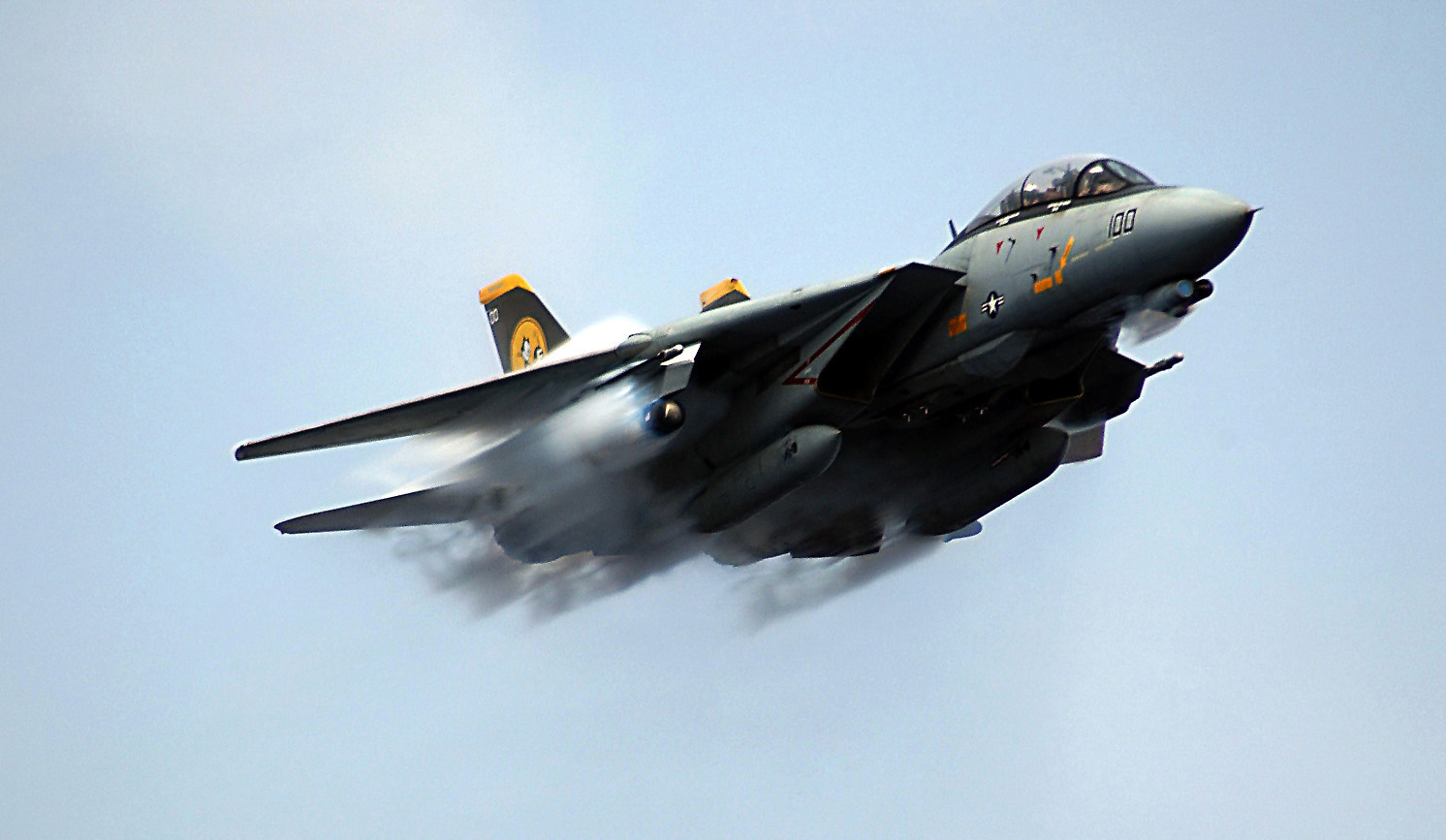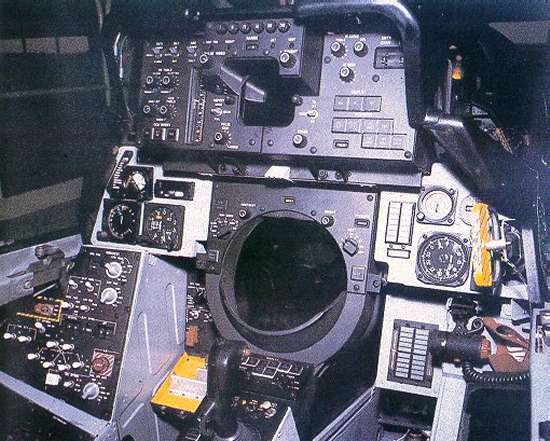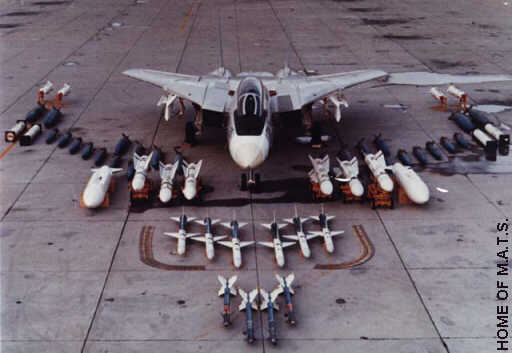The Islamic Republic of Iran Air Force (IRIAF) (Persian: نیروی هوایی ارتش جمهوری اسلامی ایران) is the aviation branch of the Iranian armed forces. The present Air Force came into being in the early 1980s when the former Imperial Iranian Air Force was renamed. The Air Force did not play a significant role in the long Iran-Iraq war, being crippled by purges in its early stages and then being relegated to defensive duties. The Air Force has attempted with some success to maintain in service the large number of American-built aircraft which Iran acquired during the Shah's regime. The Air Force has turned to purchases of Soviet and Chinese aircraft, as well as pressing ex-Iraqi aircraft into service, as well as indigenously built aircraft, in order to maintain a capable force.
In 1923 Persian Reza Khan was elected prime minister and eleven years later, in 1934 Persia was renamed to Iran. During WWII Khan was forced into exile to South Africa by the British and Soviets and his son, Ariamehr Mohamed Reza Paklavi, succeeded him, taking on strong bonds with the West. He ruled until the Dr. Mohammad Mossadegh became the democratically elected prime minister in May 1951. Allegedly with CIA interference, his government was overthrown after 27 months of service, in August 1953 and Reza was
in power
During its regime, Reza adopted the title of Shah and the economic situation in the country deteriorated which led to massive demonstrations and unrests in 1978. These unrests were supported by several political prongs within Iran; the most powerful of these became the Shi'a clergy, which used the situation to install itself in power, and declare the "Islamic Republic of Iran" (IRI). The Shah's rule collapsed and he fled the country on 16 January 1979. In turn, Ayatollah Khomeini, the acknowledged leader of the Shah's opponents, returned from exile to rule the country from than on. The Ayatollah proclaimed Islamic fundamentalism (Shi'a Islam) and conservative clerical forces subsequently crushed westernizing elements.
The 1980 move of Iraqi President Saddam Hussein in which he tried to claim the Khuzestan province lead to a bloody eight year war (the First Gulf War) between Iran and Iraq. It eventually led to an UN-mandated indecisive ceasefire in 1988 and it cost the lives of hundreds of thousands.
When the Ayatollah passed away on 4 June 1989, president Rafsanjani was elected. But during his rule the Emam (Supreme Leader) role was taken over by Ayatollah Ali Khamenei In 1997 a moderate Iranian president, Hojjat-ol-Eslam Seyed Mohammed Khatami was elected and many hoped that relations with the rest of the world would improve. Between Rezas second rule and the election of Khatami in 1997 the image of Iran in the West became that of a very fundamentalist, contra western country. While his presidency has certainly instigated a national dialogue about relaxing government restrictions, the increasing polarization between Khatamis liberal circle and Supreme Leader Khameneis hard-line fundamentalist supporters may have actually led to more incidents of censorship and discrimination.
F-14 Tomcat (only 2 sqrd (about 25 AirCrafts) This is due to fact that US bane to Sold F-14 Spare parts to IRIAF)
The Grumman F-14 Tomcat is a supersonic, twin-engine, two-seat, variable-sweep wing fighter aircraft. The Tomcat was developed for United States Navy's Naval Fighter Experimental (VFX) program following the collapse of the F-111B project. The F-14 was the first of the American teen-series fighters which were designed incorporating the experience of air combat against MiGs during the Vietnam War.
The F-14 first flew in December 1970. It first deployed in 1974 with the U.S. Navy aboard USS Enterprise (CVN-65), replacing the F-4 Phantom II. The F-14 served as the U.S. Navy's primary maritime air superiority fighter, fleet defense interceptor and tactical reconnaissance platform. In the 1990s it added the Low Altitude Navigation and Targeting Infrared for Night (LANTIRN) pod system and began performing precision strike missions.[1] The F-14 was retired from the active U.S. Navy fleet on 22 September 2006, having been replaced by the F/A-18E/F Super Hornet.[2] As of 2009, the F-14 is in service with only the Islamic Republic of Iran Air Force, having been exported to Iran in 1976, during a time when the US had good diplomatic relations with the nation.
The sole foreign customer for the Tomcat was the Imperial Iranian Air Force, during the reign of the last Shah (Emperor) of Iran, Mohammad Reza Pahlavi.
In the early 1970s, the Imperial Iranian Air Force (IIAF) was searching for an advanced fighter, specifically one capable of intercepting Soviet MiG-25 "Foxbat" reconnaissance flights. After a visit of U.S. President Richard Nixon to Iran in 1972, during which Iran was offered the latest in American military technology, the IIAF narrowed its choice to the F-14 Tomcat or McDonnell Douglas F-15 Eagle. Grumman Corporation arranged a competitive demonstration of the Eagle against the Tomcat before the Shah, and in January 1974, Iran ordered 30 F-14s and 424 AIM-54 Phoenix missiles, initiating Project Persian King, worth US$300 million. Only a few months later, this order was increased to a total of 80 Tomcats and 714 Phoenix missiles as well as spare parts and replacement engines for 10 years, complete armament package, and support infrastructure (including construction of the huge Khatami Air Base in the desert near Esfahan).
The first F-14 arrived in January 1976, modified only by the removal of classified avionics components, but fitted with the TF-30-414 engines. The following year 12 more were delivered. Meanwhile, training of the first groups of Iranian crews by the U.S. Navy, was underway in the USA; and one of these conducted a successful shoot-down with a Phoenix missile of a target drone flying at 50,000 ft (15 km).
Following the overthrow of the Shah in 1979, the air force was re-named the Islamic Republic of Iran Air Force (IRIAF) and the post-revolution interim government of Iran canceled most Western arms orders. Knowledge about F-14 use by Iran is limited; deteriorating relations led to an arms embargo being imposed on Iran, including the last Tomcat built for Iran, which was embargoed and eventually turned over to the United States Navy. Large shipments of spares were held back, and many aircraft were cannibalized for their spare parts.
In January 2007, it was announced by the US Department of Defense that sales of spare parts for F-14s would be suspended, due to concerns that they could end up in Iran. It announced that the decision was taken "given the current situation in Iran". On 2 July 2007, the remaining American F-14s were being shredded to ensure that F-14 spare parts would not be acquired by governments considered hostile to the US.Iran had an estimated 44 F-14s, with some 20 operational by 2009
General characteristics
Crew: 2 (Pilot and Radar Intercept Officer)
Length: 62 ft 9 in (19.1 m)
Wingspan:
Spread: 64 ft (19.55 m)
Swept: 38 ft (11.58 m)
Height: 16 ft (4.88 m)
Wing area: 565 ft² (54.5 m²)
Airfoil: NACA 64A209.65 mod root, 64A208.91 mod tip
Empty weight: 43,735 lb (19,838 kg)
Loaded weight: 61,000 lb (27,700 kg)
Max takeoff weight: 74,350 lb (33,720 kg)
Powerplant: 2× General Electric F110-GE-400 afterburning turbofans
Dry thrust: 13,810 lbf (61.4 kN) each
Thrust with afterburner: 27,800 lbf (124.7 kN) each
Maximum fuel capacity: 16,200 lb internal; 20,000 lb with 2x 267 gallon external tanks
The F-14 Tomcat was designed as both an air superiority fighter and a long-range naval interceptor.[18][19][20] The F-14 has a two seat cockpit with a canopy that affords all-round visibility. It features variable geometry wings that swing automatically during flight. For high-speed intercept, they are swept back and they swing forward for lower speed flight.[10] It was designed to improve on the F-4 Phantom's air combat performance in most respects.[18] The F-14's fuselage and wings allow it to climb faster than the F-4, while the twin-tail arrangement offers better stability. The F-14 is equipped with an internal 20 mm M61 Vulcan Gatling-type gun mounted on the left side, and can carry AIM-54 Phoenix, AIM-7 Sparrow, and AIM-9 Sidewinder anti-aircraft missiles
Two triangular shaped retractable surfaces, called glove vanes, were originally mounted in the forward part of the wing glove, and could be automatically extended by the flight control system at high Mach numbers. They were used to generate additional lift ahead of the aircraft's center of gravity, thus helping to compensate for the nose-down pitching tendencies at supersonic speeds. Automatically deployed at above Mach 1.4, they allowed the F-14 to pull 7.5 g at Mach 2 and could be manually extended with wings swept full aft. They were later disabled, however, owing to their additional weight and complexity.[10]
The air brakes consist of top-and-bottom extendable surfaces at the rearmost portion of the fuselage, between the engine nacelles. The bottom surface is split into left and right halves, with the arrestor hook hanging between the two halves. This arrangement is sometimes called the "castor tail",[24] or "beavertail".[25] The Tomcat has fully mechanical flying controls,[10] with the only exception being the spoilers, which are hydro-electrically driven.
Performance
------------------------------------
Maximum speed: Mach 2.34 (1,544 mph, 2,485 km/h) at high altitude
Combat radius: 500 nmi (575 mi, 926 km)
Ferry range: 1,600 nmi (1,840 mi, 2,960 km)
Service ceiling: 50,000 ft (15,200 m)
Rate of climb: >45,000 ft/min (229 m/s)
Wing loading: 113.4 lb/ft² (553.9 kg/m²)
Thrust/weight: 0.91
The undercarriage is very robust, in order to withstand the harsh takeoffs and landings necessary for carrier operation. It comprises a double nose wheel and widely spaced single main wheels. The result is very different from the narrow and high undercarriage of F-15 Eagle. Both have similar weights and a high wing that makes undercarriage stowage impractical. The Tomcat fuselage is wider and the aircraft does not need to hold big external fuel tanks, as the Eagle often does, in the ventral positions. There are no hardpoints on the sweeping parts of the wings, and so all the armaments are fitted on the belly between the air intakes and on pylons under the wing gloves
Avionics
------------------------
Hughes AN/APG-71 radar
AN/ASN-130 INS, IRST, TCS
Remotely Operated Video Enhanced Receiver (ROVER) upgrade The original set of sensors also comprised an infrared sensor under the nose in a "chin pod": it was AN/ALR-23 with indium antimonide detectors, cooled by a self-contained Stirling cycle cryogenic system, but this proved ineffective, and was replaced with a new system. This was an optical system, Northrop AAX-1, also called TCS (TV Camera Set) and was used to help pilots visually identify and track aircraft, at least on day missions,[10] up to a range of more than 60 miles for large aircraft (a zoom function was included to help with small fighters). The TCS could be "slaved" to the radar to follow whatever the radar is tracking, and the radar could be slaved to the TCS to track whatever the camera "sees." Both the crew have access to the images on their displays. Despite its utility, for a long time most F-14s did not have the system added. Bill Gunston reported that even in 1983, only one in eight aircraft had the system fitted.
A dual IR/TCS system was adopted for the later F-14D variant,[33] with an ECM antenna fitted as well in the same mast. This meant Tomcats could be configured with only an ECM antenna, or the IR sensor, or TCS, or many combinations thereof. The Tomcat's ESM system consists of many subsystems: RWR, ECM, and chaff/flare dispensers in various parts of the fuselage, nose, tail and wings. This was a marked difference with many previous fighter aircraft in that some did not even include a simple RWR
Armament
-------------
Guns: 1× 20 mm (0.787 in) M61 Vulcan Gatling Gun, with 675 rounds
Hardpoints: 10 total: 6× under-fuselage, 2× under nacelles and 2× on wing gloves[71] with a capacity of 14,500 lb (6,600 kg) of ordnance and fuel tanks
Missiles:
Air-to-air missiles: AIM-54 Phoenix, AIM-7 Sparrow, AIM-9 Sidewinder
Loading configurations:
2× AIM-9 + 6× AIM-54 (Rarely used due to weight stress on airframe)
2× AIM-9 + 2× AIM-54 + 3× AIM-7 (Most common load during Cold War era)
2× AIM-9 + 4× AIM-54 + 2× AIM-7
2× AIM-9 + 6× AIM-7
4× AIM-9 + 4× AIM-54
4× AIM-9 + 4× AIM-7
The Tomcat was originally designed to combat both highly maneuverable aircraft and the Soviet cruise missile/bomber threat.[20] As a result, the aircraft was designed to act effectively in every aspect of air combat. For weaponry, the Tomcat was designed as a platform for the formidable AIM-54 Phoenix, but unlike the stillborn F-111B it could also engage medium and short range threats.[18][20][21] As such, the F-14 was a full air superiority fighter and not only a long range interceptor.[20] It had the standard US gun, the M61 Vulcan, with 676 rounds and 4,000 or 6,000 RPM selectable (although the latter is rarely used due to jamming and overheating issues). Over 6,700 kg (15,000 lb) of stores could be carried for combat missions in several hard points under the belly and on wing-mounted hardpoints. Commonly, this meant a maximum of two - four Phoenixes or Sparrows on the belly stations, two Phoenixes/Sparrows on the wing hardpoints, and two Sidewinders on the wing hardpoints. On occasion, four AIM-7 Sparrows (on the belly) and four AIM-9 Sidewinders (on the wingmounts) were carried, similar to the F-4 and F-15


















